Finance
South Dakota opts out of Inflation Reduction Act energy rebates
Published
6 months agoon

Owngarden | Moment | Getty Images
A handful of states have rolled out rebates to consumers who make their homes more energy-efficient, just months after New York became the first state to do so, in May.
Meanwhile, South Dakota officials in August declined the federal funding, which is tied to two new programs created by the Inflation Reduction Act, a landmark climate law enacted in 2022.
The IRA earmarked $8.8 billion for consumers via two Home Energy Rebates programs.
Consumers can access up to $8,000 of Home Efficiency Rebates, and up to $14,000 of Home Electrification and Appliance Rebates.
More from Personal Finance:
Take a look inside a $1.1 million ‘zero emissions’ home
How EVs and gasoline cars compare on total cost
How to buy renewable energy from your electric utility
Together, the two rebate programs aim to defray — or in some cases fully offset — the cost of retrofitting homes and upgrading appliances to be more energy-efficient. Such tweaks can help consumers cut their utility bills while also reducing planet-warming carbon emissions, officials said.
The two programs have varying rules that determine which consumers are eligible and how much money they can access. In some cases, rebates will depend on household income and a home’s overall energy reduction.
Nearly every state has indicated it will launch a rebate program for residents, according to a U.S. Department of Energy spokesperson.
State officials had an August deadline to officially decline the federal funds. They have a Jan. 31, 2025 deadline to submit a program application to the DOE.
South Dakota is the only state so far to have signaled publicly that it won’t administer the rebates.
“With good faith, we did look into this,” Jim Terwilliger, commissioner of the South Dakota Bureau of Finance and Management, said during a July 30 appropriations hearing. “We just don’t believe that it’s the right thing for South Dakota.”
Here are the states that have applied
States, which administer the federal funds, have some leeway relative to program design. They must apply for funding and can distribute rebates to consumers after their application is approved.
New York launched the first phase of its rebates May 30.
Five others — Arizona, Maine, New Mexico, Rhode Island and Wisconsin — have since launched rebate programs, too, according to U.S. Department of Energy data as of Sept. 24.
“I’m expecting more and more to roll out,” said Kara Saul-Rinaldi, president and CEO of AnnDyl Policy Group, a consulting firm focused on climate and energy policy.

Many more states, as well as Washington, D.C., have submitted applications or had them approved, according to DOE data: California, Colorado, Connecticut, Delaware, Florida, Georgia, Hawaii, Illinois, Indiana, Michigan, Minnesota, New Jersey, New Hampshire, Massachusetts, North Carolina, Oregon, Tennessee, Vermont, Washington and West Virginia.
Together, these 26 states plus the District of Columbia have applied for $4 billion in total funding so far, the DOE said.
The rebates are a new program, and “complex government programs like these take time and coordination to set up,” according to a DOE spokesperson.
“The Inflation Reduction Act put states in charge of designing and implementing Home Energy Rebate programs that fit their local needs,” the spokesperson wrote in an e-mail. “As each state has different resources and capabilities, each state’s timeline will be different.”
South Dakota is not participating
South Dakota Gov. Kristi Noem at the Republican National Convention on July 15, 2024.
Scott Olson | Getty Images News | Getty Images
However, South Dakota officials in August signaled they wouldn’t participate, the lone state so far to decline the federal rebate funding.
“South Dakota will have no part in facilitating the Green New Deal,” Ian Fury, a spokesperson for Gov. Kristi Noem, a Republican, said in an e-mailed statement.
States had an Aug. 16, 2024 deadline to officially decline the funds.
“We don’t think the administrative burden and the expense of administering a program like that is the appropriate thing to do, and we generally disagree with the policy,” Terwilliger, of the South Dakota Bureau of Finance and Management, said in a July hearing.
The Inflation Reduction Act allows states to use up to 20% of its funding for administrative purposes.
Fifty-one states and territories have applied to DOE for early administrative funding, the agency said.
The $68.6 million of federal money that had been set aside for South Dakota rebates will be redistributed among participating states.
Fury also noted this isn’t the first time South Dakota has rejected federal spending. It was the only state to reject extended unemployment benefits in 2020 during the Covid-19 pandemic, Fury said.
The Green New Deal is a climate-change policy initiative supported by congressional Democrats starting around 2019. Bipartisan legislation to create an energy rebate program had existed almost a decade earlier, like the Home Star Energy Retrofit Act in 2010.
The concept of consumer rebates tied to energy efficiency “predates the Green New Deal by many years,” said Saul-Rinaldi.
Florida reverses course
It appears Florida officials reversed course from their original stance on the rebates.
Republican Gov. Ron DeSantis in 2023 had vetoed the state’s authority to spend about $5 million of federal funds to administer the energy rebate program. At the time, a spokesperson for the state’s Department of Agriculture and Consumer Services told CNBC that Florida wouldn’t be applying for the rebates as a result.
Florida Gov. Ron DeSantis at the Republican National Convention on July 16, 2024.
Robert Gauthier | Los Angeles Times | Getty Images
Now, Florida is preparing for a soft launch of the rebate programs in late 2024 and a full launch in early 2025, according to information on a state website.
A spokesperson for the Department of Agriculture and Consumer Services didn’t return a request for comment on the change in position.
‘Every state is approaching [its program] differently’
At a high level, consumers will be able to get the rebates at the point of sale, when they buy an appliance directly from a retailer or from a qualified contractor who’s helping a household complete an efficiency project.
“Every state is approaching [its program] differently, for many reasons,” Saul-Rinaldi said.
Many are rolling them out in phases. For example, New Mexico is starting by offering a $1,600 rebate for low-income consumers in single-family homes who buy insulation from a participating retailer.
Similar to other states, qualifying New Mexico residents will be able to later access additional rebates such as:
- $8,000 for an ENERGY STAR-certified electric heat pump for space heating and cooling;
- $4,000 for an electrical panel;
- $2,500 for electrical wiring;
- $1,750 for an ENERGY STAR-certified electric heat pump water heater;
- $1,600 for air sealing; and
- $840 for an ENERGY STAR-certified electric heat pump clothes dryer and/or an electric stove.
Consumers and contractors should consult their state energy department website to learn more about their specific programs and eligibility, Saul-Rinaldi said.
The U.S. Energy Department suggests households don’t wait to accomplish necessary home energy upgrades or projects if their state hasn’t formally rolled out rebates. They may be eligible for other federal programs, “including tax credits, the Weatherization Assistance Program, and other state, local, and utility programs,” the agency said.
You may like
Finance
Wall Street starts to cut China GDP forecasts on U.S. trade tensions
Published
4 hours agoon
April 8, 2025
Trucks line up at the container terminal in the Longtan Port area of Nanjing Port, Jiangsu province, China on the evening of April 8, 2025.
Cfoto | Future Publishing | Getty Images
BEIJING — Citi on Tuesday became one of the first investment firms to lower its China growth forecast on escalating trade tensions with the U.S.
In less than a week, U.S. tariffs on goods from China have more than doubled, while Beijing has hit back with more duties and restrictions on U.S. businesses.
Citi analysts cut their forecast for China’s gross domestic product to 4.2% this year, down by 0.5 percentage point, as they see “little scope for a deal between the U.S. and China after recent escalations.”
Natixis on Monday also told reporters the firm was cutting its China GDP forecast to 4.2% this year, down from 4.7% previously.
Morgan Stanley and Goldman Sachs have not yet cut their forecasts, but warned this week of increasing downside risks to their expectation — currently both predict 4.5% growth.
China in March announced its official growth target would be “around 5%” for 2025, but stressed that it would not be easy to reach the goal.

“The main issue is that uncertainty for the economy is rising,” Hao Zhou, chief economist at Guotai Junan International, said Tuesday in Mandarin, translated by CNBC. He noted that visibility on future growth had dropped significantly, while U.S. tariffs might keep on rising.
U.S. President Donald Trump announced an additional 50% in tariffs on Chinese goods entering the U.S. will take effect Wednesday after Beijing raised duties on all U.S. products by 34%. As part of its plan for sweeping tariffs on multiple countries, the White House last week had said it would add a 34% levy on Chinese goods.
Combined with two rounds of 10% tariff increases earlier this year, new U.S. tariffs on Chinese products in 2025 have reached 104%.
Diminishing impact from new tariffs
While an initial 50% increase in duties could reduce Chinese GDP by 1.5 percentage points, a subsequent 50% increase would drag it down by a smaller 0.9 percentage point, Goldman Sachs analysts said in a report Tuesday.
Chinese exports to the U.S. account for about 3 percentage points of China’s total GDP, Goldman said, noting that includes 2.35 percentage points of domestic value add and 0.65 percentage point of associated manufacturing investment.
China is expected to report March trade data on Monday, and first quarter GDP on April 16.
Nomura now expects China’s exports to drop by 2% this year, worse than their previous expectation of no change, the firm’s Chief China Economist Ting Lu said in a report Tuesday.
But he kept his 2025 GDP forecast of 4.5%. “Given the extraordinarily fluid situation, it is impossible to reasonably estimate the impact of the ongoing U.S.-China trade war on China’s economy,” he said, adding that his forecast already accounted for significantly worse tensions.
China this week signaled it could cut interest rates or increase fiscal spending to bolster growth in the near future.
Diminishing impact from tariffs can also feed into Beijing’s calculus that U.S. leverage is likely reaching a ceiling, Yue Su, principal economist, China, at the Economist Intelligence Unit, said in an email.
“From Beijing’s perspective, the strategic gains of a strong retaliation now appear to outweigh the associated economic costs,” she said.
Finance
U.S. financial regulator says email hack exposed sensitive bank data
Published
12 hours agoon
April 8, 2025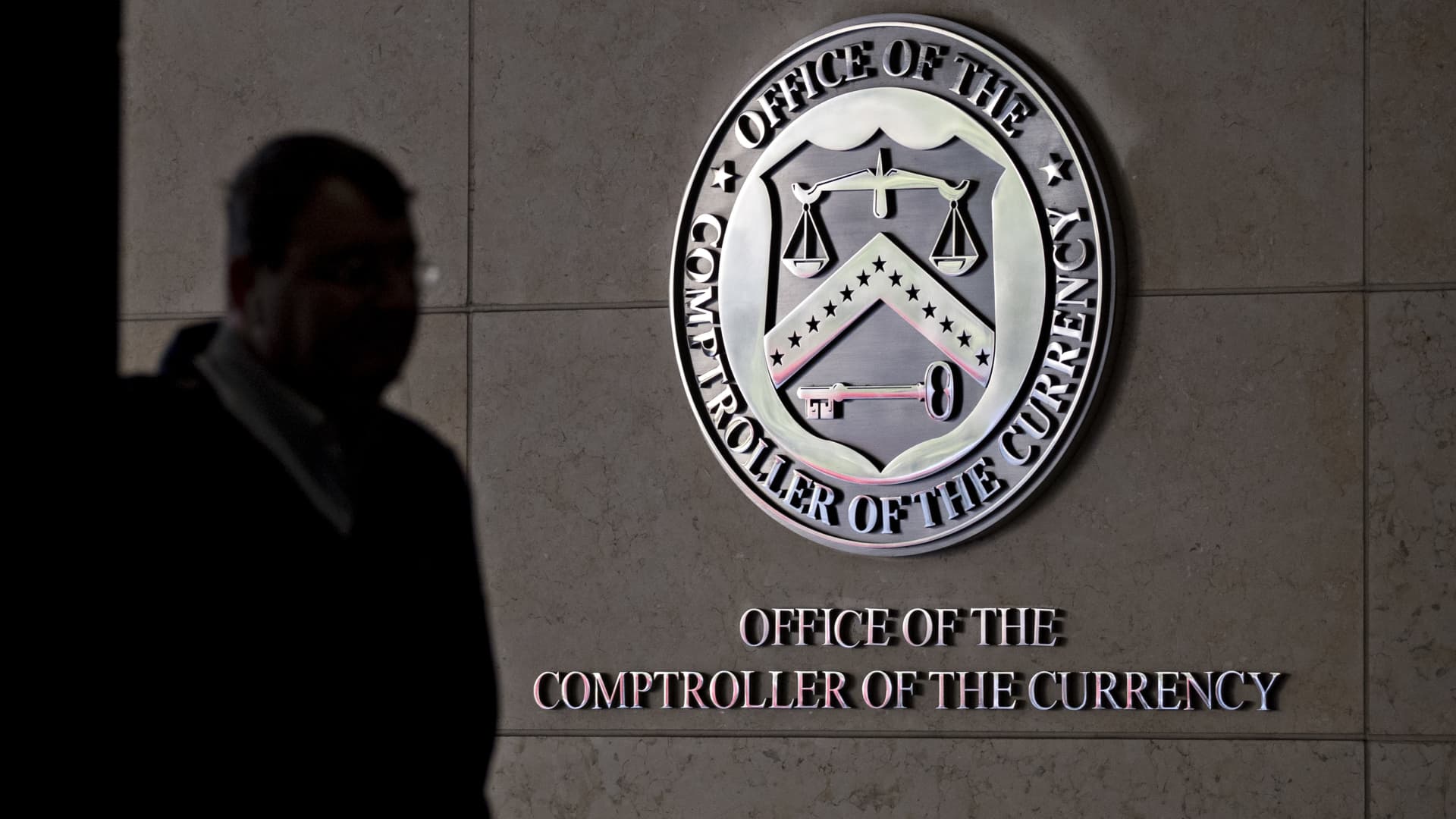
A pedestrian passes the seal of the Office of the Comptroller of the Currency (OCC) displayed outside the organization’s headquarters in Washington, D.C., U.S., on Wednesday, March 20, 2019.
Andrew Harrer | Bloomberg | Getty Images
The Office of the Comptroller of the Currency on Tuesday said that a February hack of its email systems qualified as a “major incident” and exposed “highly sensitive information.”
The breach, first disclosed and resolved in February, involved information related to the “financial condition of federally regulated financial institutions used in its examinations and supervisory oversight processes.”
The OCC, an agency that regulates and supervises national banks, said that it learned of the incident on Feb. 11, and shut off compromised administrative accounts the next day. The regulator said it is using external cybersecurity experts for a full review of the incident and is launching a review of its IT security policies to prevent further attacks.
“I have taken immediate steps to determine the full extent of the breach and to remedy the long-held organizational and structural deficiencies that contributed to this incident,” said Acting Comptroller of the Currency Rodney Hood.
“There will be full accountability for the vulnerabilities identified and any missed internal findings that led to the unauthorized access,” he added.
Hackers had access to more than 150,000 emails from June 2023 until earlier this year, Bloomberg reported earlier, citing people with knowledge of the matter.
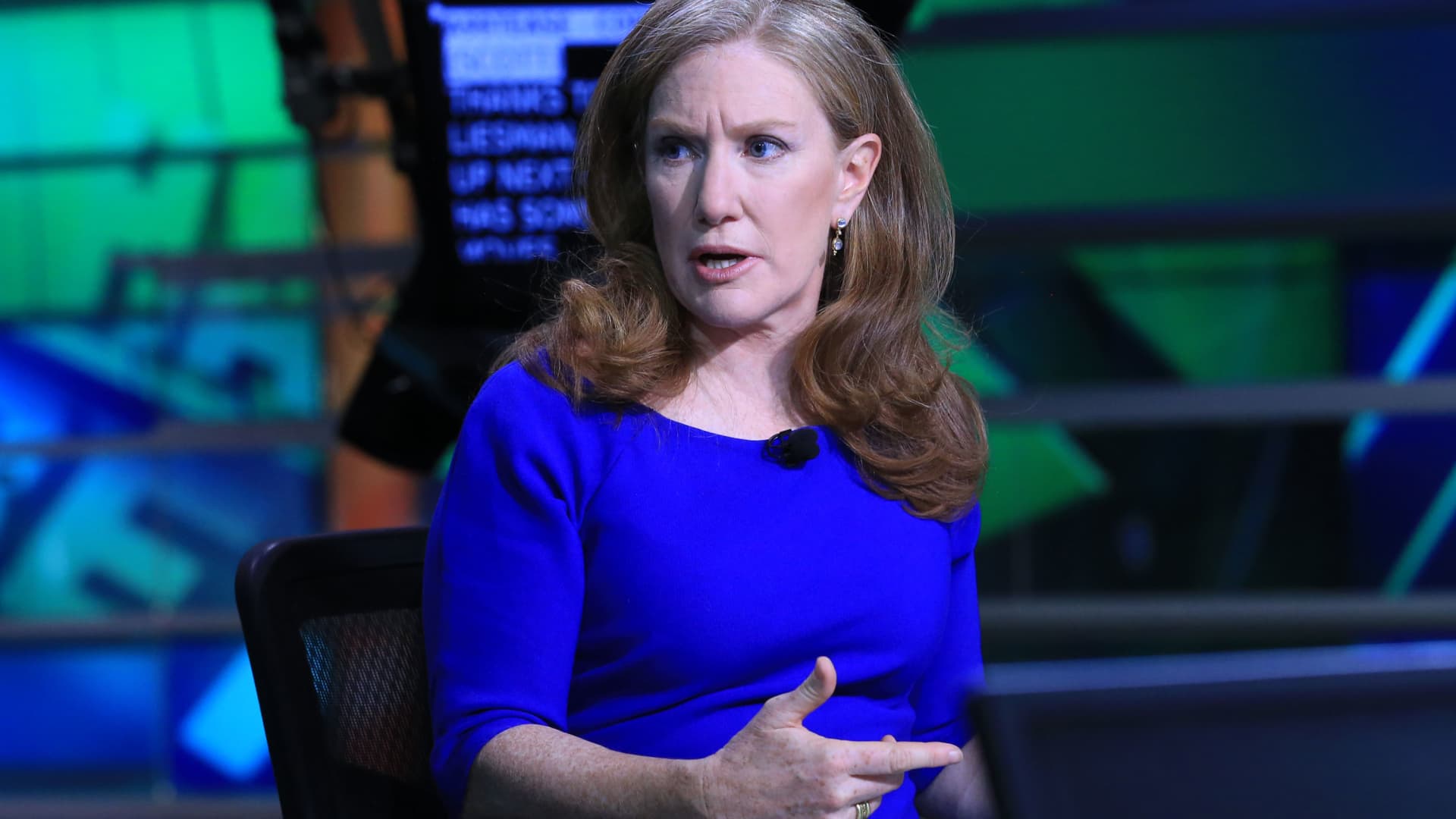
(An excerpt from the book, “Dividend Investing: Dependable Income to Navigate All Market Environments,” by Jenny Van Leeuwen Harrington, CEO of Gilman Hill Asset Management.)
While I instantly loved the intrigue and challenge of investing, having grown up in a financially volatile family, aggressive financial risk-taking made me extremely queasy. In 2001, when I inadvertently stumbled into dividend investing, I found a strategy that resonated deep in my core—the comfort, clarity and consistency of a dividend income stream gave me the confidence that I required to be a successful investor. I found it empowering to know that whatever was happening in the mercurial stock market, the income stream that dividends offered would be there chugging along, plunking into investment accounts, providing a reliable source of income month after month.
Only by managing a dividend income portfolio, where the dependability of dividends offered the extraordinary benefit of investment return and emotional comfort, could I find the confidence to manage money for other people—money that they had worked so hard to save and that they could either use as a source of income or simply count on as a dependable portion of their total portfolio return.
The individuals that invest in dividend-oriented strategies can be divided into two main categories: those who need income and those who want income.
- Those who fall into the “need it” category tend to be focused on a very specific objective—typically the generation of income for retirement or as a supplemental source of funds to support their lifestyle. Perhaps more interesting are the many investors who simply like to see income hitting their portfolios. In the land of unpredictable stock market returns, the monthly deposits of cash from dividends bring tremendous comfort in a frequently discomfiting landscape.
Even though the equity income strategy was off to a successful start, and I had left Neuberger Berman in 2006 to move to Gilman Hill Asset Management and essentially go out on my own with the strategy, I did not fully comprehend its unique value until March 5, 2009—just four short days before the S&P 500 hit the diabolical low of 666. I was nine months pregnant at the time and was calling clients to check in and make sure that they were as okay as possible given the market turbulence.
When times are tough, you do not hide from your clients.’ I was not quite three years into having gone out on my own and I felt an overwhelming debt of obligation and responsibility to the handful of people who had taken a gamble on me and entrusted their life savings to a 30-something-year-old. What would later become known as the bear market of the Great Financial Crisis had started over a year before and the only thing I knew I could do that was guaranteed to be smart was to communicate frequently, openly and honestly.
Dividend income provides emotional comfort, emotional comfort encourages good investment behavior and good investment behavior creates superior long-term returns.
Twenty-two years later, this strategy sounds as utterly unremarkable as it did then: invest in a portfolio of stocks that produces a 5% or better aggregate dividend yield. The primary difference between then and now is that back then, almost no one else was doing it. While there are income oriented strategies aplenty today (many are perfectly sound, but others come with hidden risks in the form of leverage or the excessive use of derivatives to drive the income stream), if you wanted significant dividend income from equities in 2001, you could buy a real estate investment trust (REIT) or utility fund, or you could buy a handful of master limited partnerships (MLPs); but there were very few funds that focused on dividends. Of course, back in 2001, the ten-year Treasury bond offered an average yield of between 4.5% and 5.5% and the need for income was usually easily satisfied through fixed income—and most individual investors defaulted to that approach.
I see portfolio management as the pursuit of utilitarian outcomes—be they tangible and/or psychological—for real people. As I often ask my clients, “What is the point of having money if it cannot bring you comfort?” Why else would one save their whole life other than to have a comfortable retirement and/or make their kids’ lives a bit more comfortable? An investment portfolio is worth nothing but the paper that the monthly statements are printed on if it cannot meaningfully improve your life, and hopefully the lives of others. That life improvement can take two primary forms: financial and psychological relief.
You will notice that I start each chapter with one of my favorite quotes from some of the investment world’s greatest investors…Despite coming from different types of investors and wealth creators, and from all eras and centuries, these quotes have one thing in common: they are all about behavior. I find it interesting that the world’s best investment advice from the world’s best investors is all about behavior—not about how to find a great investment; not about the research process; not about valuation. It seems to be a fair conclusion, then, that excellent investing is very closely correlated with excellent behavior.
1. What is a Dividend?
“‘Dividends are like plants: Both grow. But dividends can grow forever, while the size of plants is limited.’—Ed Yardeni”
A dividend is a payment, usually made in cash on a regular quarterly basis, to a shareholder. If a stock is trading at $100 per share and has a 5% dividend yield, it means that shareholders will receive $5 per share annually, or $1.25 every three months. So, if you own $1,000 worth of that stock, you will receive $50 per year, or $12.50 each quarter.
If a company has said that it will pay you a $5 dividend, it is likely to do so whether the stock price is $100, $75 or $125. The dividends for most US-based companies are considered fixed and are paid out regularly, and are not affected by the share price. (Later, we will discuss variable dividends.)
If a stock was purchased for $100 with a $5 dividend, then at the time of purchase the dividend yield was 5%. If the market tanks and the shares trade down to $75, but the company is still executing well and continues to pay the $5 dividend, the yield is now 6.7% (5 divided by 75). The opposite is also true: if the market takes off and carries the share price along with it, up to $125 per share, and the company is still happy to pay a $5 dividend, then the dividend yield will now have become 4% (5 divided by 125).
So why do companies pay dividends instead of just keeping all the cash? One reason is that in order to entice people to buy its stock, a company needs to offer potential shareholders something in return. For some companies, that enticement is the prospect of enormous future growth in earnings and, hopefully, in share price. For others, it is the promise of a regular return on the money that a shareholder has invested in that company.
Companies may also pay and regularly increase dividends as a way to signal their confidence in the future, as well as their control of the business’s financial prospects and balance sheet. Paying stable and growing dividends is a way to advertise to potential shareholders, “Come invest with us—we know what we’re doing and know how to return money to our investors. In a sea of knuckleheads, we’re the mature grownup who can actually run a significantly profitable company.”
Today, we are seeing a renewed focus on dividend return to shareholders. In 2022, the total dividends paid out by S&P 500 companies was $565 billion, the highest figure on record. For the first time in decades, interest rates are structurally higher and near-zero borrowing costs seem to be a phenomenon of yesteryear. Also, in the four years from 2018 to 2022, investors experienced three bear markets (as defined by a 20% or more market decline). As their revenues and market capitalizations have reached gargantuan scale, the Apples and Microsofts of the world have become so mature and so profitable that their future growth rate prospects have significantly diminished (much like what happened to Chevron decades earlier). Meanwhile, they are enormously profitable and generate more cash than they can possibly reinvest in their businesses. So, what are they doing? They are paying dividends. In fact, in 2023, Microsoft was the world’s single-largest dividend payer, returning approximately $19 billion to shareholders. (However, because of the high valuation of the share price, the dividend yield on Microsoft shares is still under 1%.
“As we move into the coming decades, it is most likely that collectively, US companies will continue to pay out enormous sums of their income in the form of dividends. However, the leadership of the biggest dividend payers and the amounts they pay will always fluctuate and evolve.” (29)
2. Emotional Comfort
“The investor’s chief problem—and his worst enemy—is likely to be himself. In the end, how your investments behave is much less important than how you behave.” —Benjamin Graham
Investing for dividend income can provide an investor with the warm, cozy blanket of reliable cash in their pockets through thick and thin. The comfort of knowing that you do not need to make an active decision to sell stocks for cash to be deposited in your investment account—regardless of a bull or bear market; regardless of if you are hard at work at the office, relaxing at home or on a cruise in the middle of the ocean—can be immensely useful and, I believe, encourages the type of superior investment behavior that correlates to excellent long-term investment returns.
When choosing between plain yogurt with granola and a chocolate croissant or custard-filled, chocolate-frosted doughnut, the less healthy option usually gets the better of me. The stock market holds these same temptations. Think back to March 2009 or March 2020, when the S&P 500 bottomed out at the respective bear market lows. Try to remember (or imagine) how you felt at those times. In my career, those were the only times that I have been truly scared. In both instances, I was no longer able to rely on market history as a guide. Both were terrifying and unprecedented in modern history.
The point of reminding you of this fear is to think back to how hard it was to see your investment account plunging in an environment with extremely little visibility. While we all know that we should try to avoid panic selling when the market is going down, and that we should, according to Warren Buffett, ‘Be fearful when others are greedy and greedy when others are fearful,’ acting on that logic and not acting on the emotional fear instinct is very difficult.
In my 25-plus years of managing a dividend income strategy, I have found that the reliability of dividend income is remarkably useful in supporting good investment behavior in exactly these worst-case scenario situations. Because it means that you do not need to sell into the teeth of a bear market to generate the cash on which you depend, dividend income keeps you invested—which is the correct thing to do at times when the market and your emotional state are telling you to do the opposite.
Without a doubt, the most important element of an individual’s investment success is behavior. Professional investors are trained to control their behavior and may succeed using a variety of different investment strategies. Individuals, while highly trained in their unique professions, are likely to be less comfortable seeing their investment dollars flung about by the whims of the stock market and may find that a strategy where the cash just rolls in regularly—very much like their bi-weekly paychecks—brings them the comfort that they need to stick it out through a variety of market environments.
3. What Types of Companies Choose to Pay Dividends and Why?
“I think you have to learn that there’s a company behind every stock, and that there’s only one real reason why stocks go up. Companies go from doing poorly to doing well or small companies grow to large companies.”—Peter Lynch
Just because a company pays a dividend does not mean that it intends to have the dividend income be a major component of shareholders’ total return. Some companies, like Realty Income Trust, focus on creating significant income for their shareholders and maintain dividend yields that are well above the market average, and are thus considered dividend income stocks. However, most of the Dividend Aristocrats are more like Procter & Gamble (P&G) and Walmart: they have much lower dividend yields, but still focus on growing their earnings significantly and maintaining growth in their dividends. These are considered dividend growth companies. For investors looking for their portfolios to produce a meaningful stream of income, dividend income stocks are where it’s at.
In addition to knowing that their shareholders require some part of their return to be predictable, companies like P&G (as well as Exxon, IBM, etc.) have a precedent problem. Even if their management teams and boards of directors begin to consider that it is a poor capital allocation decision to pay out such a substantial amount of cash as a dividend, rather than investing it back in their own business, if they decided to stop paying a dividend or even just to reduce the dividend, they would have a shareholder revolt and an investor relations nightmare on their hands.
To help us better understand why some companies choose to pay out large dividends, while others do not, let’s move away from the generally low-yielding Dividend Aristocrats list and examine two companies that my clients have owned over the years and are in the same business of equipment leasing: growth-focused United Rentals and dividend income-focused H&E Equipment (H&E).
So, here we have two companies that essentially have the same business: construction equipment rentals. The geographies are different, but as each has grown, there has been more and more overlap and geographic contingency. Thankfully, the need for construction equipment has boomed and both businesses have remained extremely profitable…
From an investment perspective, there is one key area where the companies diverge dramatically: capital allocation. United Rentals, which was founded to essentially roll up a fragmented and inefficient industry, believed that the best use of its enormous free cash flow generation was to buy up competitors to drive growth through acquisition. H&E, meanwhile, was created to supply rental equipment to construction projects and to generate income for the original Head and Enquist families. In its early years, the company was essentially a family-run business and believed that returning a large dividend to shareholders (the two families and other employees of the company were significant shareholders) was a critical element of the value proposition that it was able to offer investors.
The comparison of H&E and United Rentals offers a valuable reminder that any type of company can pay dividends, and that each decision-making process is unique and complex. Frequently, people assume that certain companies either do or do not pay a strong dividend based on nothing more than the industry in which the company operates. It is true that REITs and midstream energy companies, due to their tax structures, generally fit the stereotype and tend to pay out significant dividend income. As a result of their high cash flow generation and low growth prospects, utilities have also correctly fallen into the high dividend payer stereotype. However, outside of those groups, paying a dividend is a choice, not a presumption, and the decision is often made very strategically by the board of directors and management. Sometimes, offering a large dividend can be used as a tool to attract a shareholder base that shares the same values of consistent cash flow generation and is supportive of a management team that will consistently try to hit singles and doubles, and not swing for the fences with the aspiration of a rare grand slam. Coincidentally, shareholders that value dividends are frequently more long-term focused and less rabblerouser-activist in nature, and in many cases make for a better shareholder partnership with a company’s leadership team.
Theoretically, issuing dividends and buying back stock are both ways to return cash to shareholders. However, one method is direct and the other is indirect. In the case of dividends, the cash literally is deposited into a shareholder’s brokerage account each quarter. In the case of share buybacks, the number of a company’s shares are reduced, which directly increases the earnings per share. Theoretically, the shares should then trade higher, since there are now more earnings per share than there were when there was a greater number of shares outstanding. Whether or not the shares respond accordingly, however, is largely down to the whims of the market.
In the United States, the regularity of expected dividend payments is viewed as sacrosanct. Once a company starts paying a dividend, unless it was originally announced as a “special” one-time dividend, it is presumed that dividends will be paid quarterly and will show regular growth. Share buybacks, on the other hand, are expected to be more ad hoc in nature, whereby a company buys back shares when it is flush with cash and does not when cash is scarcer. Theoretically, share buybacks are a better use of capital allocation in that they increase the per-share profitability of a company. Practically, however, investors love seeing cash dropped into their brokerage accounts and value the immediate return of a dividend versus the more indirect return of a share buyback. Psychologically, companies that pay dividends are also thought of as safety plays, based on the idea that if a company is generating so much excess cash that it can confidently expect to pay a consistent dividend well into the future, then it must have a secure future. So, in addition to being a practical way to offer compelling shareholder return, a dividend acts as a signal of corporate strength and stability.
As was mentioned previously, for companies in the United States, dividend payments are expected to be regular and once a company starts paying a dividend, it is on the hook to keep paying a dividend. Interestingly, however, overseas, dividends do not have the same presumption of regularity and consistency. In fact, many foreign companies pay dividends with less consistency and less regularity. Elsewhere, dividends are often viewed in the way that share buybacks are in the United States—as bonuses when there is plenty of extra cash, not as a guaranteed, eternal promise. Since they were never established as something regular or guaranteed, cutting and raising dividends for overseas companies does not raise eyebrows the way they would in the United States.
Jenny Van Leeuwen Harrington is the Chief Executive Officer of Gilman Hill Asset Management, LLC, an income-focused, boutique investment management firm located in New Canaan, CT. Ms. Harrington also serves as Portfolio Manager of the firm’s flagship Equity Income strategy, which she created and has managed since its inception. In this capacity, she is responsible for a portfolio of 30 to 40 stocks with a mandate of generating a 5% or higher aggregate annual dividend yield, with additional potential for capital appreciation, while minimizing downside risk relative to the broad equity market. Ms. Harrington has over twenty-five years’ investment experience. Prior to joining Gilman Hill in 2006, she was a Vice President at Neuberger Berman, and an Associate and Analyst in the Equities and Investment Management divisions at Goldman Sachs.

Wall Street starts to cut China GDP forecasts on U.S. trade tensions

DOGE planning to centralize IRS data under one API

Lawmakers reintroduce bill to expand tax credits for affordable housing

New 2023 K-1 instructions stir the CAMT pot for partnerships and corporations

The Essential Practice of Bank and Credit Card Statement Reconciliation

Are American progressives making themselves sad?
Trending
-

 Accounting5 days ago
Accounting5 days agoOn the move: KPMG adds three asset management, PE leaders
-

 Economics1 week ago
Economics1 week agoDOGE comes for the data wonks
-
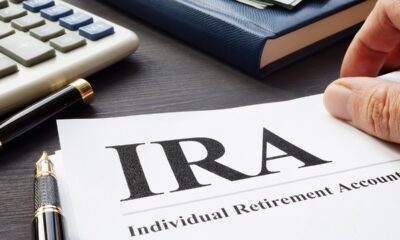
 Finance1 week ago
Finance1 week agoPlanning for retirement? What to know about traditional, Roth IRAs
-

 Personal Finance1 week ago
Personal Finance1 week agoWhy fewer young adults are able to invest in homeownership
-
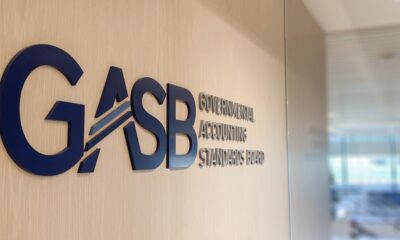
 Accounting1 week ago
Accounting1 week agoGASB mulls accounting for severe financial stress and probable dissolution
-
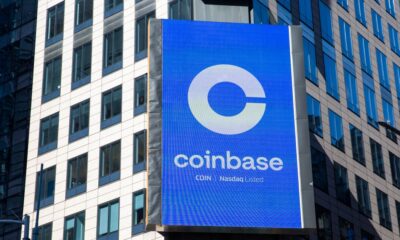
 Accounting7 days ago
Accounting7 days agoX asks Supreme Court to shield Coinbase users from IRS probe
-
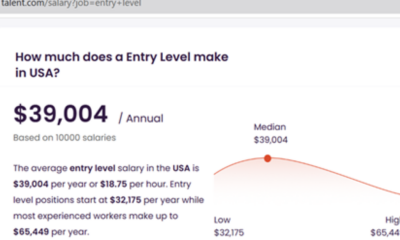
 Accounting1 week ago
Accounting1 week agoLocal firm slashes staff starting salaries
-

 Economics1 week ago
Economics1 week agoGerman inflation, March 2025
